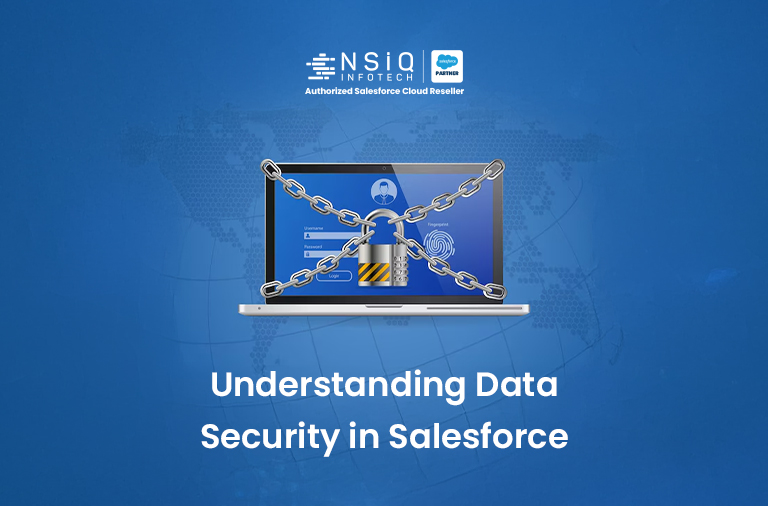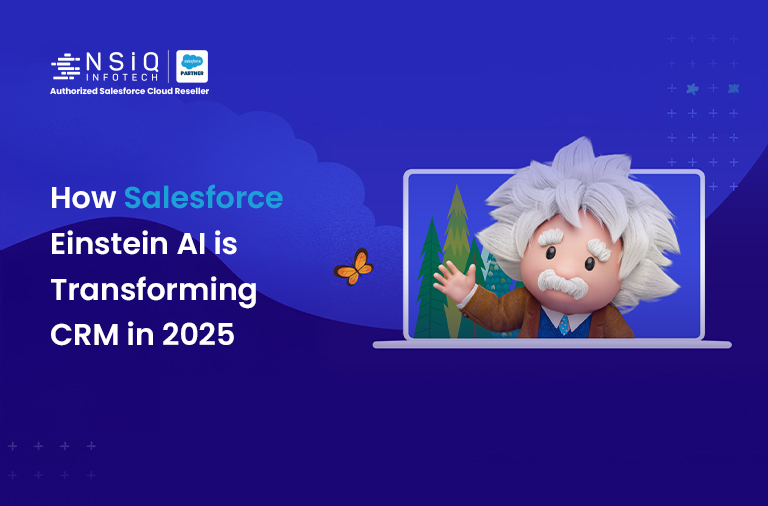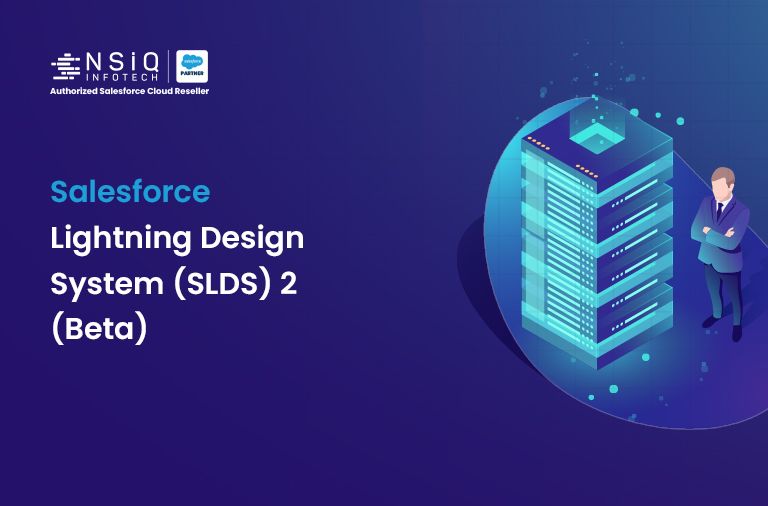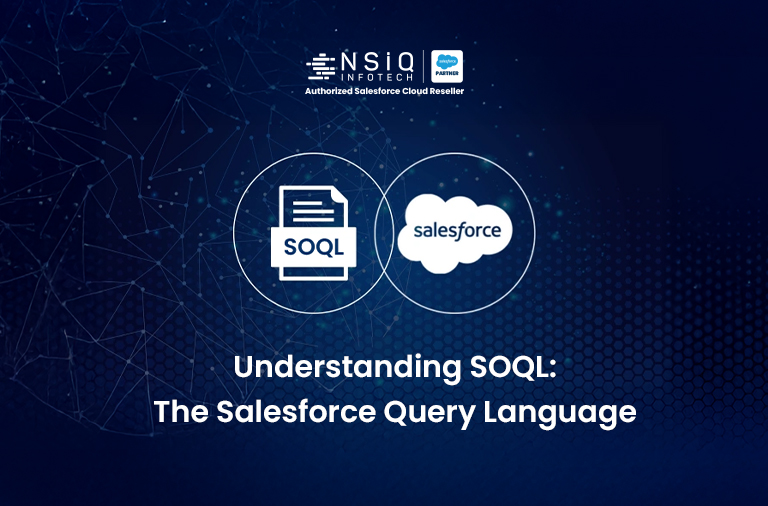Understanding Data Security in Salesforce

Introduction
What is Data Security?
- In today’s world, data is very valuable.
- Businesses depend on information about customers, partners, employees, and processes.
- If this information falls into the wrong hands, it can cause:
- Reputational damage
- Legal issues
- Financial losses
That’s why Salesforce — a leader in CRM — offers various measures to protect data security.
Salesforce Data Security ensures that:
- Sensitive information is protected from unwanted access.
- Users can only see the data intended for them.
- Admins control how, when, and where data can be accessed.
Why Salesforce Needs a Security Model
- Unlike traditional databases, Salesforce is multi-tenant (different companies share the same platform).
- Therefore, Salesforce developed a security model to:
- Protect each organization’s data.
- Still allow flexible sharing within the company.
Why do we need Data Security in Salesforce?
- To prevent unauthorized access to customer information.
- To comply with regulations like GDPR, HIPAA, and CCPA.
- To reduce the risks of data leaks, insider threats, and cyberattacks.
- To balance business efficiency with data confidentiality.
Security Layers in Salesforce
Salesforce security operates like a four-layer defense system:
- Organization-Level Security → Who can log in, where from, and when.
- Object-Level Security → Access to entire objects (Account, Contact, Opportunity, etc.).
- Field-Level Security → Control visibility/edit rights for specific fields.
- Record-Level Security → Control access to individual records.
Analogy
- Data = Stored in a house
- Organization Security = Community gate
- Object Security = Main door of the house
- Field Security = Locks on cupboards
- Record Security = Which items in those cupboards you can see or touch
Organization Level Security
First line of defense — ensures that only trustworthy users can log in.
Key Features:
- Login IP Ranges → Restrict access to trusted IPs or corporate networks.
- Example: A bank allows employees to log in only from its corporate VPN.
- Login Hours → Limit login times.
- Example: Sales reps log in from 8 AM to 7 PM, but not at midnight.
- Two-Factor Authentication (MFA) → Extra verification (OTP, mobile app approval).
- Password Policies → Enforce password strength, expiry, and login attempts.
- Session Settings → Manage inactivity timeout, simultaneous sessions, and IP session security.
Real-world Example:
- A healthcare company enforces MFA + IP restrictions.
- Doctors can access Salesforce from the hospital but not from home Wi-Fi.
Object Level Security
Controls who can access entire objects (Account, Contact, Opportunity, or custom objects).
Managed through:
- Profiles
- Permission Sets
Available Permissions:
- Read → View records.
- Create → Insert records.
- Edit → Modify records.
- Delete → Remove records.
Examples:
- HR users → Access Employee object, but not Opportunity object.
- Sales reps → Access Accounts & Opportunities, but not HR records.
Best Practice:
- Avoid granting unnecessary Delete permissions.
Field Level Security
Controls access to specific fields within an object.
- A user may access a record but not sensitive fields.
Managed through:
- Profiles
- Permission Sets
Examples:
- Sales team → Can see Account Name, Industry, Phone.
- Sales team → Cannot see Annual Revenue.
- HR → Can see Employee Salary field.
- IT users → Cannot see Salary.
Why Important?
- Even if a record is visible, confidential fields (e.g., SSN) must remain hidden.
Record Level Security
Determines which individual records users can view once they have object access.
Methods:
- Organization-Wide Defaults (OWD): Set baseline access → Private, Public Read Only, Public Read/Write.
- Role Hierarchy: Higher roles inherit visibility from lower ones.
- Sharing Rules: Grant access based on record ownership or criteria.
- Manual Sharing: Record owner shares access with specific users.
- Teams (Account Teams, Opportunity Teams): Enable collaborative access.
Example:
- OWD = Private → Each sales rep sees only their own opportunities.
- Sales Manager → Can view all opportunities for their team.
- Sharing Rule → Indian sales team gets all accounts with billing country = India.
Best Practice:
- Keep OWD = Private, then open access where necessary.
Example Scenarios
- Restrict employees to log in only from the office (Login IP Ranges).
- Hide the Salary field from most users but allow HR (Field Level Security).
- Allow managers to view their team’s opportunities (Role Hierarchy).
- Make Accounts visible to everyone but keep Opportunities private (OWD).
- Give external partners access only to specific records (Partner Community Sharing).
Data Security Tools & Features in Salesforce
Beyond the 4 layers, Salesforce provides additional tools:
- Profiles → Define baseline access.
- Permission Sets → Grant extra access without changing profile.
- Roles → Hierarchical visibility model.
- OWD → Baseline record sharing model.
- Audit Trail → Track configuration changes (last 6 months).
- Login History → Monitor failed logins.
- Shield Platform Encryption → Encrypt sensitive fields (SSN, credit card).
- Event Monitoring → Track activities (API calls, data exports).
- Field Audit Trail → Keep historical field values.
- MFA (Multi-Factor Authentication) → Adds extra login security.
Salesforce Shield
For companies handling very sensitive data.
Features:
- Shield Platform Encryption → Protects data at rest and in transit.
- Event Monitoring → Logs detailed user activities (exports, logins, etc.).
- Field Audit Trail → Retains field history up to 10 years (vs. standard 18 months).
Example:
- A healthcare company encrypts patient medical records with Shield to comply with HIPAA.
Best Practices for Data Security
- Always follow Least Privilege Principle (minimum access).
- Use Permission Sets instead of too many Profiles.
- Enable MFA for all users.
- Encrypt sensitive fields with Shield.
- Avoid using View All Data & Modify All Data except for admins.
- Conduct quarterly audits of user access.
- Use WITH SECURITY_ENFORCED in Apex SOQL.
- Test access with dummy users.
- Keep OWD = Private → selectively open access.
- Monitor Login History for suspicious activity.
Common Pitfalls & Tips
- Don’t rely on page layouts to hide fields → Use Field-Level Security.
- Don’t give everyone System Admin
- Don’t forget Community/Partner users → Apply same rules.
- Don’t leave inactive users undeactivated.
- Don’t clone SysAdmin profiles unnecessarily.
- Use criteria-based sharing for flexibility.
- Train end-users on data security awareness.
SOQL and Security Enforcement
Even with SOQL queries in Apex → Security is enforced.
With SECURITY_ENFORCED:
SELECT Name, Salary__c
FROM Employee__c
WITH SECURITY_ENFORCED
- If user lacks access to Salary__c, query throws an error.
- Prevents unauthorized field exposure.
Real-World Case Study
Scenario: Financial Services Company
- OWD for Account = Private.
- Role Hierarchy = Regional Managers → Sales Managers → Sales Reps.
- Sharing Rule → Banking sector accounts shared with Finance team.
- Field Security → Credit Score field hidden from Sales Reps.
- Shield Encryption → SSN field encrypted.
- Event Monitoring → Tracks large data exports.
Result:
- Data remains secure.
- Employees get only the info they need.
Do’s vs Don’ts
| Do’s | Don’ts |
| Use Profiles + Permission Sets | Don’t rely only on Profiles |
| Keep OWD = Private | Don’t keep everything Public |
| Use Field-Level Security | Don’t just hide fields via Page Layout |
| Audit user access regularly | Don’t ignore inactive users |
| Encrypt sensitive data | Don’t leave data unencrypted |
| Enable MFA | Don’t allow weak login security |
Conclusion
- Data security in Salesforce is not just a feature — it’s a responsibility.
- Businesses deal with highly confidential data; even a small lapse can cause severe damage.
- By combining Organization, Object, Field, and Record-Level Security, admins can build a secure yet flexible system.
- Advanced tools like Shield, MFA, Event Monitoring make it stronger.
- Following best practices, regular audits, and user education ensures Salesforce remains trusted, compliant, and secure.
related blog




